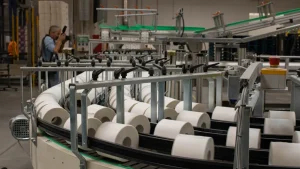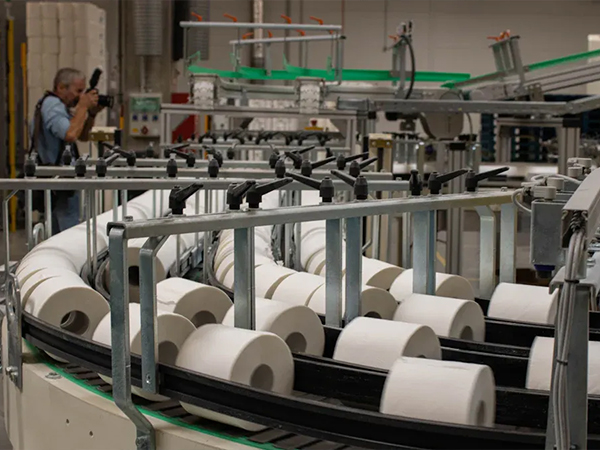
You use an ASA Sizing Agent in neutral papermaking systems to boost water resistance and printability. This agent reacts quickly in a neutral to alkaline pH range, giving you fast curing and improved paper quality. Many mills in Europe and the USA now prefer ASA for its reliable performance. The table below compares ASA with AKD, showing how ASA delivers enhanced water resistance and better printability for your paper.
| Sizing Agent | Reactivity | pH Preference | Curing Speed | Water Resistance | Printability |
|---|---|---|---|---|---|
| ASA | High | Neutral to Alkaline (pH 6.5-8.0) | Fast | Enhanced | Improved |
| AKD | Moderate | Alkaline | Slower | Excellent | Good |
Key Takeaways
- ASA Sizing Agent enhances water resistance and printability in paper, making it a preferred choice in modern papermaking.
- Emulsification is crucial for ASA effectiveness; use starch-based or polymer-based emulsifiers to create stable emulsions.
- Control pH levels between 6.5 and 8.0 to maintain emulsion stability and maximize sizing performance.
- Fast application of ASA emulsions is essential; prepare them just before use to prevent hydrolysis and ensure optimal results.
- Using cationic additives can improve retention and sizing efficiency, leading to better quality paper.
ASA Sizing Agent in Neutral Papermaking

What Is ASA Sizing Agent
You encounter ASA Sizing Agent as a specialized chemical used to improve the water resistance of paper in neutral papermaking systems. This agent, known as Alkenyl Succinic Anhydride, features a unique molecular structure with cyclic dicarboxylic anhydride and tetrafurandione groups. You work with ASA Sizing Agent in the form of a light yellow, oil-like liquid. It does not dissolve in water, so you must emulsify it using starch-based or polymer-based emulsifiers. The typical emulsion particle size is around 1 µm, which helps you achieve even distribution throughout the paper stock.
You can see the main chemical properties of ASA Sizing Agent in the table below:
| Property | Description |
|---|---|
| Chemical Structure | Organic compound with cyclic dicarboxylic anhydride and tetrafurandione. |
| Color | Light yellow, oil-like. |
| Solubility | Non-soluble in water; requires emulsification for use in papermaking. |
| Emulsification | Can use starch-based or polymer-based emulsifiers. |
| Particle Size | Typical emulsion particle size is around 1 µm. |
| Retention Mechanism | Charge attraction between anionic cellulose and cationic ASA emulsion. |
| Sizing Development | Occurs in the dryer section where ASA interacts with fibers. |
The effectiveness of ASA Sizing Agent depends on its interaction with cationic starches. You need to emulsify ASA in cationic starch to make it work in water. Research shows that the charge of the starch matters more than its molecular weight. Higher charged starches give you better sizing efficiency.
Purpose and Benefits
You use ASA Sizing Agent to give paper water resistance and improve printability. This agent reacts quickly in neutral systems, so you see fast curing and reliable performance. ASA Sizing Agent helps you produce paper that resists ink bleed and maintains strength when exposed to moisture.
You also support sustainability when you choose ASA Sizing Agent. New developments, such as sunflower-based ASA, enhance the environmental footprint of paper products. You benefit from these improvements in several ways:
- You help reduce the use of fossil-based chemicals by switching to biobased ASA-like agents made from renewable raw materials.
- You contribute to a more sustainable packaging value chain.
- You improve the recyclability of paper and board products.
ASA Sizing Agent offers you a balance of performance, efficiency, and environmental responsibility. You can rely on it to meet the demands of modern papermaking while supporting eco-friendly practices.
ASA Sizing Mechanism

Chemical Reaction with Fibers
You rely on ASA Sizing Agent to create a hydrophobic barrier on paper fibers. When you add the agent to the pulp, it reacts with the hydroxyl groups on cellulose fibers. This reaction forms a covalent bond, which anchors the sizing agent to the fiber surface. As a result, you achieve water resistance in the finished paper. The reaction happens quickly, especially in the neutral pH range. You see the best results when the agent interacts with the fibers before it undergoes hydrolysis. If hydrolysis occurs too soon, the sizing agent loses its effectiveness and forms free acids that do not bond well with cellulose. You must control the timing and conditions to maximize the reaction with fibers and minimize unwanted hydrolysis.
Emulsification and Particle Size
You cannot add ASA Sizing Agent directly to water because it is not water-soluble. You must first create a stable emulsion using an emulsifier. The choice of emulsifier plays a critical role in the stability and performance of the emulsion. Different emulsifiers offer varying levels of protection against hydrolysis and coalescence. The table below summarizes how common emulsifiers affect emulsion stability:
| Emulsifier Type | Stability Effect | Reference |
|---|---|---|
| Cationic Starch | Not effective in preventing ASA exposure to water due to high reactivity. | [12, 13] |
| Polyvinylamine | Provides varying levels of stability against hydrolysis and coalescence. | [2] |
| Hydrophobically Modified Starch | Improved stability of ASA emulsion, monitored by pH changes over time. | [20] |
| Laponite | Exhibits hydrolysis resistance and improves sizing performance. | [24] |
| Chitosan | Enhances stability without reducing emulsion quality. | [8] |
| Nano/Microparticles | Stabilizes emulsion droplets against coalescence. | [5] |
| Synthetic Polymers | Creates a protective barrier, reducing water interaction and hydrolysis rate. | [10] |
| Particle Size | Smaller sizes lead to higher specific surface area, enhancing stability. | [11] |
You should also pay close attention to the particle size of the emulsion. The size of ASA droplets directly affects how well the agent distributes in the pulp and how efficiently it bonds to fibers. For best results, you want the droplet size to be less than 1 μm. Smaller droplets provide a larger surface area, which improves stability and helps prevent the droplets from merging together. If the droplets become too large, the emulsion can break down quickly, reducing the effectiveness of the sizing process.
- Particle size significantly influences the hydrolytic stability and deposition of ASA emulsions.
- The efficiency of ASA emulsion is primarily determined by the droplet size and its distribution.
- For optimal sizing efficiency, the size of ASA droplets should be less than 1 μm during emulsion preparation, as larger sizes can lead to instability and quicker coalescence.
Tip: Always monitor the emulsion particle size during preparation. Consistent, small droplets help you achieve uniform sizing and better paper quality.
Retention and Hydrolysis
You need to ensure that the ASA Sizing Agent stays on the fibers until it reacts. Retention refers to how well the agent attaches to the pulp during the papermaking process. You can improve retention by using retention aids, such as cationic polymers, which help bind the emulsion droplets to the negatively charged cellulose fibers. Good retention means more of the sizing agent reacts with the fibers, leading to better water resistance.
Hydrolysis presents a major challenge. When ASA Sizing Agent comes into contact with water, it can hydrolyze, forming free acids that do not bond to cellulose. This process reduces the effectiveness of the sizing and can lead to poor paper quality. You must minimize the time between emulsion preparation and its addition to the pulp. Using stable emulsifiers and maintaining a neutral pH also help slow down hydrolysis. By controlling these factors, you increase the likelihood that the agent will react with the fibers rather than hydrolyze prematurely.
Note: Fast application and careful process control are essential. Delays or improper handling can lead to significant losses in sizing performance.
Factors Affecting Performance
pH and Water Chemistry
You must pay close attention to pH and water chemistry when working with ASA sizing in neutral papermaking. The pH level directly impacts the stability of your emulsion and the effectiveness of the sizing process. A neutral to slightly alkaline pH (6.5–8.0) supports optimal performance. If the pH drops too low, aluminum ions may adsorb onto the fibers, which can interfere with sizing. You can see the main influences in the table below:
| Factor | Influence |
|---|---|
| pH | Critical for ASA emulsion stability. |
| Aluminum Ions | Adsorption at low pH affects sizing performance. |
You can achieve emulsion stability even with a low dosage of vinylamine polymer. Monitoring pH over time helps you maintain this stability. Consistent pH control ensures that your sizing agent remains effective throughout the process.
Additives and Retention Aids
You rely on additives and retention aids to keep the sizing agent attached to the fibers. Cationic polymers, such as polyvinylamine or cationic starch, improve retention by binding the emulsion droplets to the negatively charged cellulose. This step increases the efficiency of the sizing process and reduces waste. You should select additives based on your system’s chemistry and the specific needs of your paper grade. Proper use of retention aids leads to better water resistance and more uniform sizing.
Tip: Adjust the dosage of retention aids based on your pulp composition and process conditions. Overdosing can cause deposits, while underdosing reduces sizing efficiency.
Application Methods
You must choose the right application method to maximize sizing efficiency. The process begins with on-site preparation of the ASA emulsion, as it has a short shelf life. You typically add the emulsion near the fan pump, where the pulp consistency is about 1%. This location ensures even distribution of the emulsion in the pulp. The table below outlines common application methods and their impact:
| Application Method | Description | Impact on Sizing Efficiency |
|---|---|---|
| ASA Emulsion Preparation | Emulsify and add close to the fan pump. | High chance of hydrolyzed ASA formation due to water. |
| Addition to Pulp | Move mixture to headbox at ~1% consistency. | Ensures homogenous distribution of ASA in the pulp. |
| Dewatering and Drying | Dewater and dry in the dryer section. | Develops sizing by enhancing resistance to liquid penetration. |
- Prepare ASA emulsions on-site because of their short shelf life.
- Use starch-based or polymer-based emulsifiers for stability.
- Sizing develops mainly in the dryer section, where the emulsion breaks down and releases ASA.
You must emulsify ASA oil before adding it to the wet end. This step ensures a homogenous distribution in the pulp slurry. The typical particle size of the emulsion is around 1 µm, which helps retain the agent in the forming sheet. The dryer section is where you see the final development of sizing, as the emulsion particles break down and enhance the paper’s resistance to liquid.
Challenges and Best Practices
Common Issues
You may encounter several recurring challenges when working with ASA sizing in neutral papermaking systems. These issues can affect both the efficiency of your process and the quality of your final product:
- High levels of PCC filler can reduce sizing effectiveness, making ASA less efficient than AKD in some cases.
- Hydrolyzed ASA can deposit on the paper machine, causing runnability problems and increasing maintenance needs.
- Alkaline-sized papers sometimes show weaker toner adhesion compared to those sized with traditional rosin.
- Insufficient soluble aluminum additives can limit the effectiveness of your sizing.
- If you do not deliver the emulsion immediately or if the cationic starch solution is too warm, you may see a drop in sizing efficiency.
- Increased refining can help reduce pore size in the paper, but if not managed, it may also impact drainage and strength.
Tip: Regularly monitor your process for these issues to maintain consistent paper quality and machine performance.
Solutions and Optimization
You can address these challenges by following proven best practices and optimizing your process. The table below summarizes key strategies for minimizing hydrolysis and improving sizing efficiency:
| Best Practice | Description |
|---|---|
| Timing of Emulsion Preparation | Prepare the emulsion as late as possible, ideally seconds before adding to thin stock. |
| Use of Stabilizers | Lower the pH of the cationic starch solution with additives like adipic acid or alum. |
| ASA Addition Point | Add ASA after hydrocyclone cleaners to reduce hydrolysis risk. |
To further enhance retention and sizing uniformity, you should consider the following:
| Optimization Strategy | Description |
|---|---|
| Cationic Additives | Use cationic additives such as PAC, CPAM, PEI, or PDADMAC to boost sizing efficiency. |
| HYP Substitution | Substitute HYP for HWBKP, keeping HYP below 20% to improve sizing results. |
You can also improve emulsion stability by adjusting your emulsifier type or dosage. For example, cellulose nanofibrils can triple the storage life of ASA emulsions and reduce the negative effects of temperature and calcium ions. Cationic starch helps stabilize droplets, while combining CNFs with cationic starch achieves stability at lower concentrations.
Note: Immediate delivery of the emulsion and cooling the cationic starch solution can significantly enhance ASA sizing efficiency.
By applying these best practices, you can overcome common challenges and achieve optimal results in your neutral papermaking system.
You play a key role in optimizing neutral papermaking by managing emulsion stability, retention, and application methods. Recent advancements let you use bio-derived formulations and digital tools to boost hydrophobicity and process efficiency.
- ASA sizing creates controlled hydrophobic zones, improving ink adhesion and drying rates.
- Additives and cationic polymers enhance sizing performance, as shown in the table below:
| Factor | Impact on Sizing Efficiency |
|---|---|
| Additives | Improve performance and uniformity |
| Cationic Polymers | Charge density affects sizing effectiveness |
Stay proactive with best practices and troubleshooting to achieve consistent, high-quality results.
FAQ
What is the shelf life of ASA emulsions?
You should use ASA emulsions within 30 minutes of preparation. The agent hydrolyzes quickly in water, which reduces sizing efficiency. Immediate application ensures optimal performance.
Can you use ASA sizing in recycled paper production?
You can apply ASA sizing to recycled fibers. You may need to adjust retention aids and monitor pH closely. Recycled pulp often contains contaminants that affect sizing results.
How do you prevent ASA hydrolysis during papermaking?
You prepare the emulsion just before use. You keep the cationic starch solution cool. You add stabilizers like alum or adipic acid. These steps help you minimize hydrolysis and maintain sizing effectiveness.
Does ASA sizing affect paper recyclability?
You improve recyclability when you choose ASA sizing. ASA does not hinder repulping or recycling processes. Bio-based ASA agents further support sustainable paper production.






